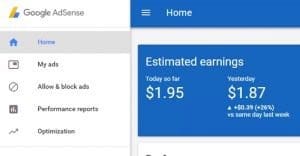The Do’s and Don’ts to Growing Your Site with Viral Content

Everyone loves the idea of viral; at least, everyone who isn’t talking about diseases. Viral content has the potential to draw 1000% of your usual traffic to your site in an astonishingly short amount of time. Sites have been known to crumble under the weight of the sudden publicity. Conversions skyrocket simply based on volume, and the wealth of analytics data allows you to deeply optimize your site for future surges.
Of course, viral suffers from the fickle nature of the group mind. You may be viral one day for absolutely no reason at all, and a month later, everyone has forgotten your name. Viral isn’t something you can rely on… or is it?
Think of viral traffic as a thunderstorm, a bolt of lightning. You can’t sit inside and will the storm to strike your store. You can’t even go out and shout at the clouds, hoping they retaliate. You can, however, grab a metal pole and climb the tallest structure around.
The key to good viral content is the ability for users to click a single button to show it to their friends. The harder it is to share, the less likely people are going to share it, and your volume of shares goes down. Considering viral traffic is all about a chain reaction in sharing, this is deadly.
Nothing you put behind a members only gate is going to go viral. If Facebook like gates were still in use, they would keep your content from going viral as well. The point is, don’t put a barrier between your users and your content. They will bounce and you will have nothing to show for it.
DO: Create content that appeals to an emotion in some way.
How much of the content that you consume daily elicits a reaction beyond a mild “huh.”? Chances are, very little. You want to be creating content that elicits some kind of reaction from your users. It can be positive, it can be negative, it can be anywhere in between, as long as it’s a reaction.
DON’T: Assume the way to appeal to emotion is through controversy.
Take a look at Upworthy for a good idea of the range of emotions you can appeal to for viral content. Note how, when a negative emotion comes up, it’s typically something everyone can agree on. It’s better to write about something unilaterally awful like kicking puppies than it is to write something deeply controversial.
DO: Create content based around numbered lists.
Numbered lists are bordering on overdone, but that’s simply because they’re such an effective way to organize content. One thing you may want to stay away from, however, is the added “number 7 made me tear up!” line. That’s practically trademarked by boring linkbait sites these days.
DON’T: Try to make something as complex as you can.
Undue complexity in your headlines and your articles makes them more intellectually challenging to parse and understand. The problem is, intellectual challenge is a barrier to entry. If you’ve read the previous points, you should know that additional barriers restrict your ability to go viral; that’s why some of the most viral content is also some of the dumbest drivel you’ve ever read. It’s compelling, but it’s not exactly complex.
DO: Experiment with odd and unusual language.
Pull out a thesaurus for this one. Don’t say “pretty eyes,” say “mesmerizing eyes.” Pick a descriptor you want to use, plug it into thesaurus.com and find the most exaggerated, hyperbolic version of the word you can find.
DON’T: Make demands with your content language.
When you tell a user that they “have to share this” or “must reblog” your content, you’re giving them orders. Most people don’t like being ordered around by strangers, and they’ll rebel against you when you try.
Having your content go viral is one thing, but what are you doing with that traffic? If the answer is “nothing,” all you’re doing is running up server costs. Figure out how to leverage that influx of traffic to grow your brand awareness, gather analytics data or drive sales.
DON’T: Be a one-hit wonder on the digital stage.
Going viral is not the end of the road; it’s one step in a long journey. Once one piece of content goes viral, it’s easier to keep the ball rolling, because many of those users will check back to see if you publish anything else they like. If you drop off the map, they will too.
DO: Keep up the user engagement, despite the volume.
Users comment on viral content. It’s no different than users commenting on your content normally, and you should treat it as such. Consider it practice for when that volume is the norm for your extremely successful business.
DON’T: Allow negative comments to grind you down.
There will always be haters, contrarians, devil’s advocates in any group. These people leave negative comments just to stress you out and wear you down. Don’t let them get to you. Deal with them as necessary, either by ignoring them, deleting them or taking any potentially valid criticism to heart.
DO: Piggyback on trending topics.
Trends mean people are already paying attention to the topic. If you can get a foothold in that wave of traffic, you have an easier time riding it to the top. Fighting against a trend means trying to pull attention away from the current hot item.
DON’T: Attempt to newsjack a tragedy for personal gain.
Tragedies are very tricky; they draw a lot of attention, but trying to capitalize on that attention leads to incredible negative feedback. If you’re going to attempt to newsjack a tragedy, do it for humanitarian reasons. Duracell running energy stations in the wake of a hurricane is one such “good cause.”
DO: Include visuals that support the content as much as possible.
A picture is worth a thousand words, and the typical piece of viral content is laced with pictures. Buzzfeed popularized the animated gif list, Upworthy has taken the viral video and run with it, and you can include an image for every point in your list, engineered to make readers chuckle.
DON’T: Post boring content you stole from Buzzfeed.
This goes for any other viral aggregator or content producer. If you ‘re doing what they did, at least have the decency to do is better. If you’re making an animated gif list like Buzzfeed, don’t just steal the gifs from Buzzfeed themselves.
Each post you write is a chance to go viral, or, when you do go viral, a chance for a chain reaction of even more viral content. Keep producing content with the objective of going viral on a regular basis. Don’t give up because it doesn’t work right away.
No matter how hard you try, you won’t be able to start the viral chain yourself. Fake accounts, spamming your links and other such techniques will just earn you a laugh. You look desperate, and that’s what everyone remembers.

 ContentPowered.com
ContentPowered.com







